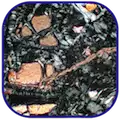Bringing MARGINS Research into the Classroom

GeoPRISMS Team Developed Teaching Activities
Rupturing Continental Lithosphere ▼ Seismogenic Zone Experiment ▼ Source to Sink ▼ Subduction Factory ▼ Search all Mini Lessons »Rupturing Continental Lithosphere Lessons (RCL)
Explore the geologic and geophysical processes that control continental rifting and its progression to lithospheric rupture. Findings from the Gulf of California-Salton Trough region address boundary conditions (pre-existing weaknesses, upper mantle structure, relative plate motion) and define factors that control rifting in this setting, including magmatism, rift obliquity, and sedimentation. Exercises on comparative bathymetry and styles of extension provide useful background material for the mini-lessons.
- Overview: Rupturing Continental Lithosphere Mini-Lesson Sequence A brief introduction to rupturing continental lithosphere and mini lesson sequence.
- Bathymetry of Rifted Margins An examination of two contrasting rifted margins: the Red Sea and Gulf of California, leading to identification of similarities and differences associated with rifting and lithospheric rupture in each setting.
- Exploring Styles of Extension in the Gulf of California: An introduction to processes associated with continental rifting, and resulting fault geometries and distributions, and lithospheric responses, using seismic data examples from the Gulf of California.
- Role of Sedimentation in Rifting: A module in which students use field and geophysical measurements and observations of Gulf of California basins to calculate isostasy and its controls.
- Role of Plate Motion Obliquity in Rifting: A module that uses Euler poles to describe the relative motion between the Baja Microplate and North American Plate, highlighting how the obliquity of rifting changes along strike in the Gulf of California.

Seismogenic Zone Experiment Lessons (SEIZE)
Comparative subduction zone tectonics and fault slip processes are examined through case studies from around the world, using existing data sets to document the evolution of convergent margins through time, and the range of fault processes that can occur in these settings.
- Overview: Seismogenic Zone Experiment Mini-Lessons
- Accretionary vs. Erosive Subduction Margins: This module examines the nature and variability of subduction margins through examination of data sets that document subduction zone inputs, deformation, and resulting morphology in different settings.
- The Spectrum of Fault Slip: Introduction to the different types of slip behaviors that can occur on subduction thrust, and comparative analysis of data sets derived from earthquakes and slow slip events to learn to discriminate among events.
- The Plate Boundary Fault of the 2011 Tohoku Earthquake: Oceanic Provenance and Earthquake Genesis: This module provides an example of how stratigraphy influences tectonics, and vice versa, using new ocean drilling observations of the plate boundary fault along which magnitude 9 Tohoku earthquake slipped in 2011.

Source to Sink Lessons (S2S)
A guided exploration for students to work with data to understand sediment flux and dispersal on continental margins through a variety of data sets and online tools.
- Overview: The Source-to-Sink Mini-Lesson Series
- From Source to Sink: How Sediment Reflects the Journey from the Mountains to the Sea : This introductory module focuses on characterizing different river systems to better understand where sediment comes from and the variables that control sediment supply to continental margins in different tectonic settings.
- Sediment Dispersal and Continental Margin Stratigraphy: This module examines different sediment dispersal systems and their relationships and controls on margin stratigraphy and geometry, using data sets from the Fly and Waipaoa river systems.
- Contemporary Climate Oscillations: ENSO and a case study of the Huanghe River: This module uses data of monthly mean sea level pressure from Tahiti and Darwin, Australia to calculate the Southern Oscillation Index (SOI) of El Niño-Southern Oscillation (ENSO) for comparison with the Huanghe River (China) discharge and correlated anthropogenic effects.
- Holocene Optimum: A time of massively increased sediment discharge for Asian Rivers
- Sediments and Carbon Burial on the Continental Margins: This lesson explores factors that control the character and fate of carbon delivered by rivers from the continents to the oceans, using mapped characteristics and data from 12 different rivers, including the MARGINS Waipaoa and Fly systems.

Subduction Factory Lessons (Subfac)
Hands-on examinations of data sets representing different parts of the subduction zone system, and the processes that operate within them, from metamorphism and melting, through volcanism and erupted deposits.
- Overview: The Subduction Factory Mini-Lessons
- Subduction Zone Metamorphism: This module introduces students to subduction zone metamorphism through the examination of rock samples, calculating P-T-t paths, and comparing them to thermal model predictions of P-T paths.
- Slab Temperatures Control Melting in Subduction Zones, What Controls Slab Temperature? Hands-on demonstrations of advection and diffusion of heat in subduction zones, and their controls on slab thermal evolution and relationships to melting, using analog models.
- Central American Arc Volcanoes, Petrology, and Geochemistry: This module teaches basic concepts in igneous petrology through relating hand specimen identification of lavas to major element geochemistry, using the Central American volcanic arc as an example.


